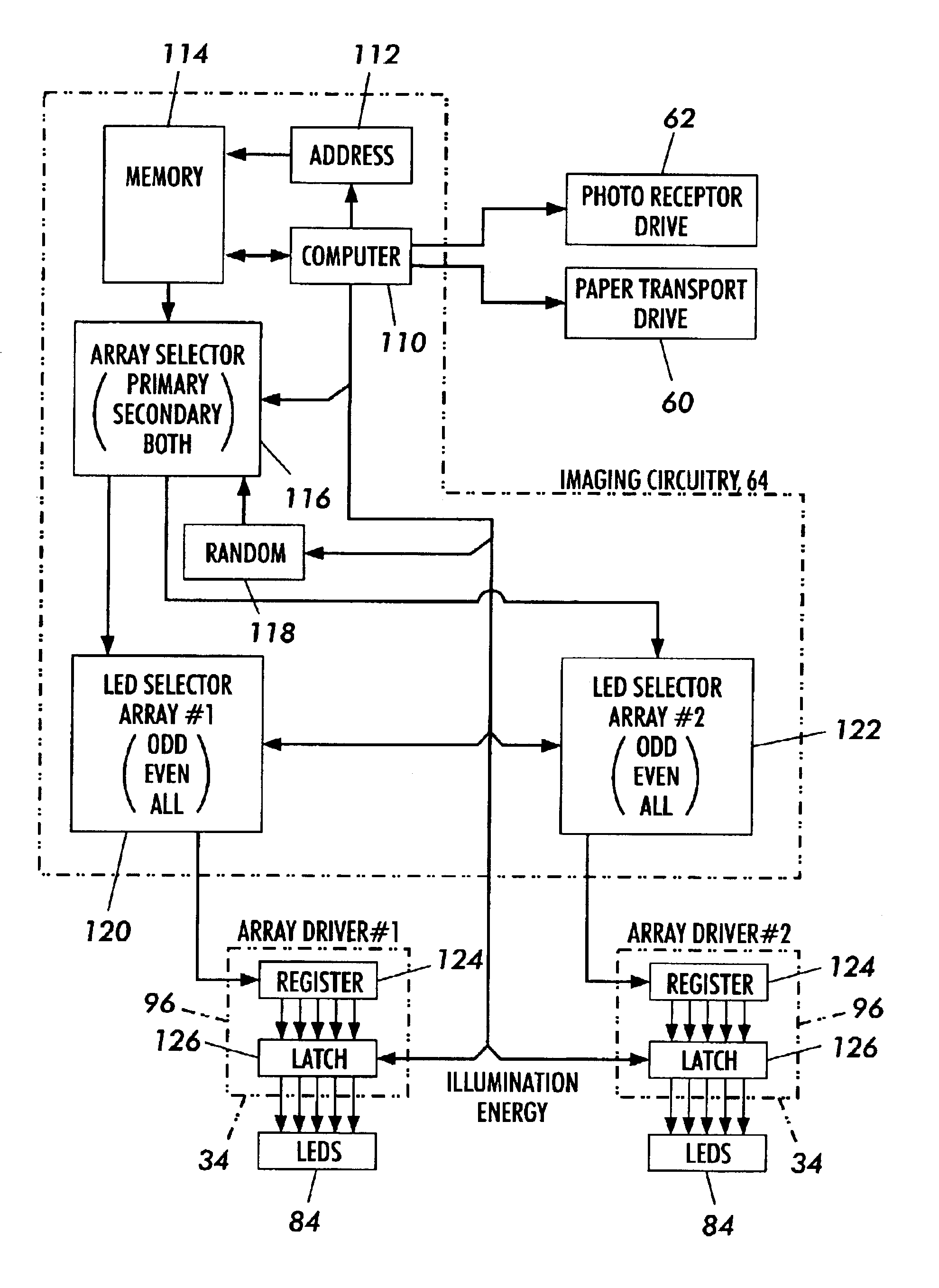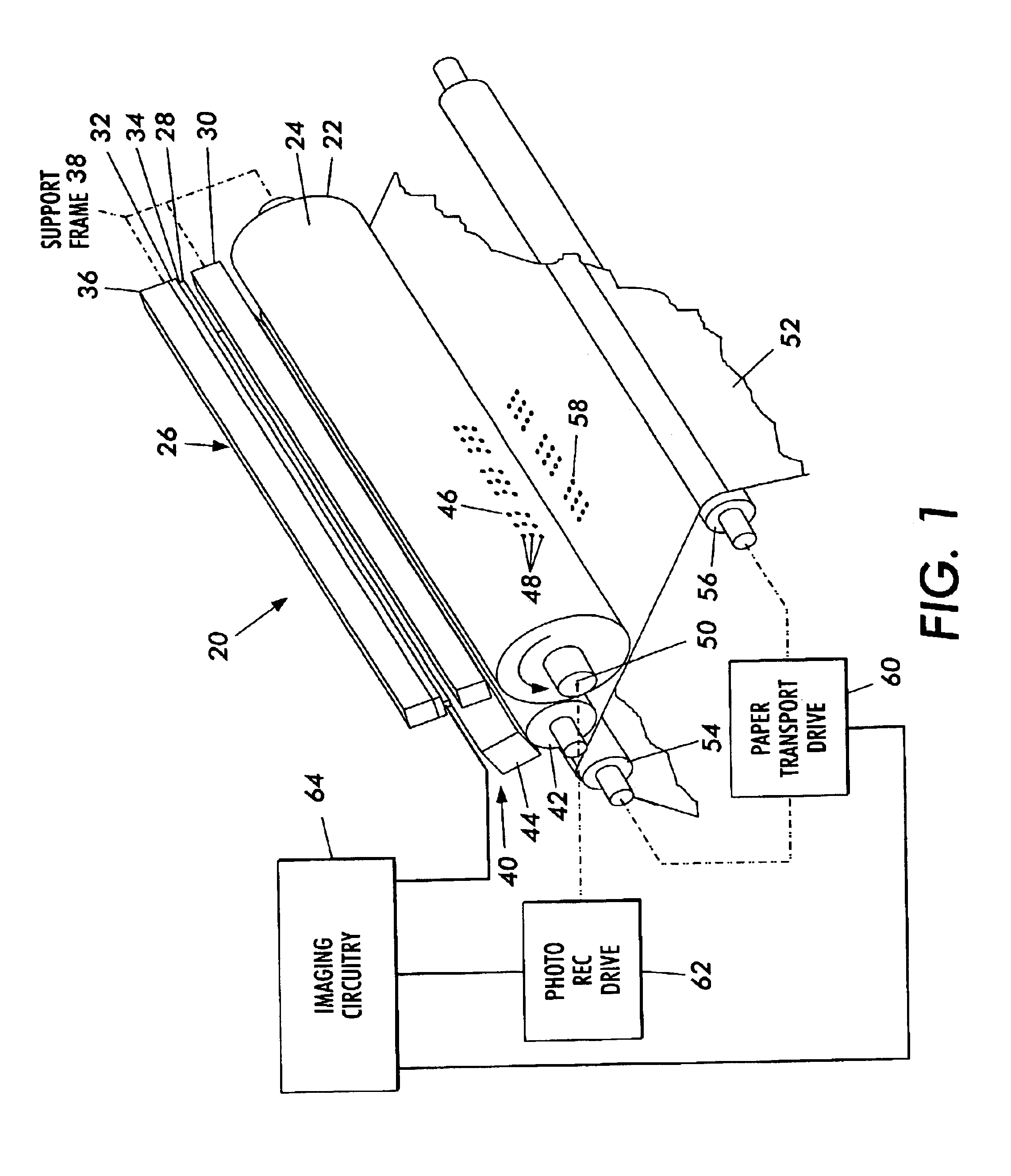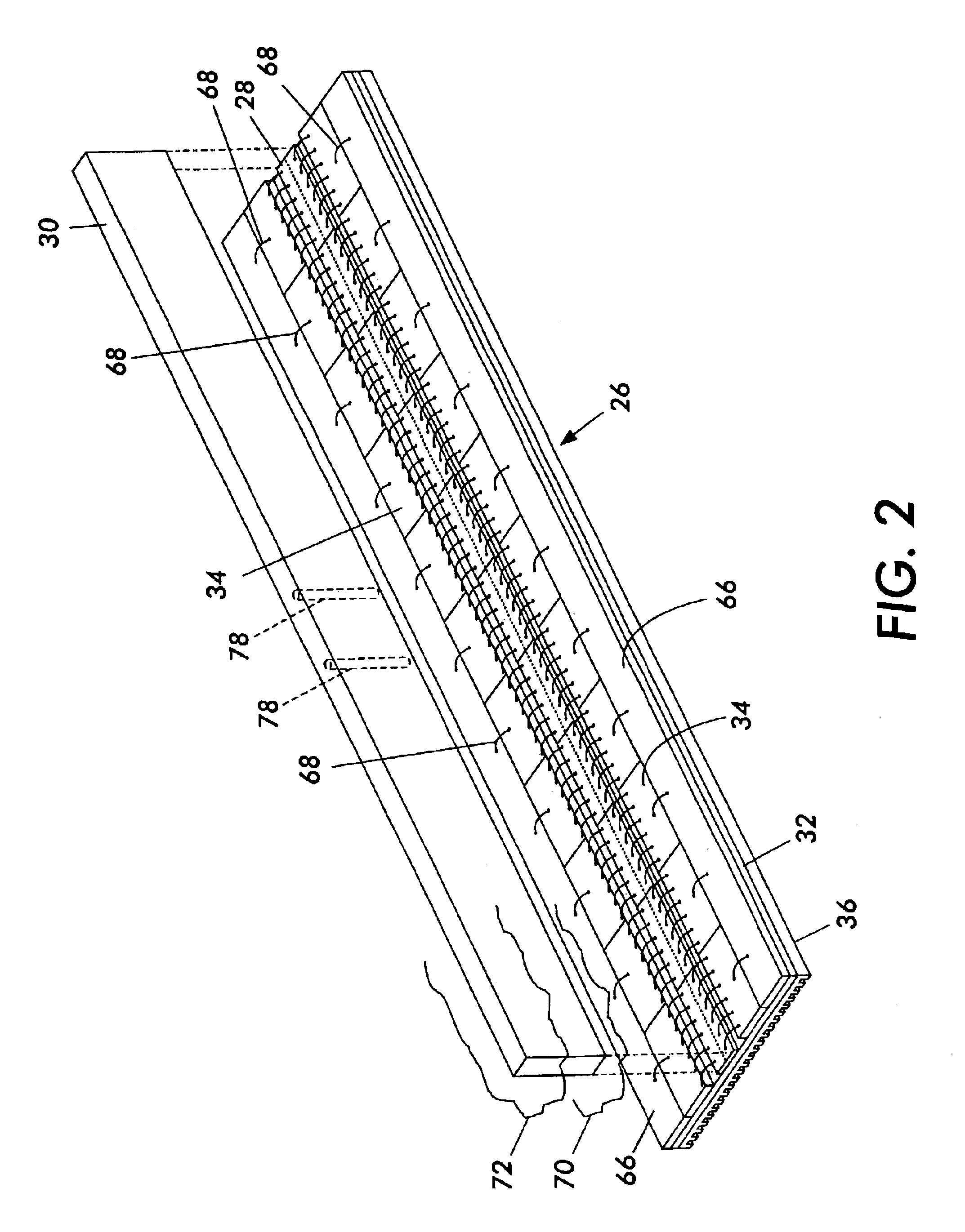Printhead with plural arrays of printing elements
- Summary
- Abstract
- Description
- Claims
- Application Information
AI Technical Summary
Benefits of technology
Problems solved by technology
Method used
Image
Examples
Embodiment Construction
With reference to FIG. 1, a xerographic printing engine 20 comprises a photoreceptor 22 in the form of the cylindrical drum with an outer image receiving surface 24 of photosensitive material, and a printhead 26. The printhead 26 has an elongated shape, in the form of a bar, and includes printing elements in the form of sources of light. In a preferred embodiment of the invention, the sources of light are provided by an assembly 28 of LEDs which radiates light through an optical focusing element in the form of an elongated group of fibers of a lens 30 to produce a latent image on the receiving surface 24. The LED assembly 28 is mounted on a substrate 32 which also carries LED driver circuitry 34, wherein heat produced by the driver circuitry 34 and the LED assembly 28 is dissipated by a heat sink 36 disposed on a backside of the substrate 32 opposite the LED assembly 28. Also included in the printhead 26 is a frame 38 which holds the lens 30 adjacent to, but with a small spacing fro...
PUM
 Login to View More
Login to View More Abstract
Description
Claims
Application Information
 Login to View More
Login to View More - R&D
- Intellectual Property
- Life Sciences
- Materials
- Tech Scout
- Unparalleled Data Quality
- Higher Quality Content
- 60% Fewer Hallucinations
Browse by: Latest US Patents, China's latest patents, Technical Efficacy Thesaurus, Application Domain, Technology Topic, Popular Technical Reports.
© 2025 PatSnap. All rights reserved.Legal|Privacy policy|Modern Slavery Act Transparency Statement|Sitemap|About US| Contact US: help@patsnap.com



